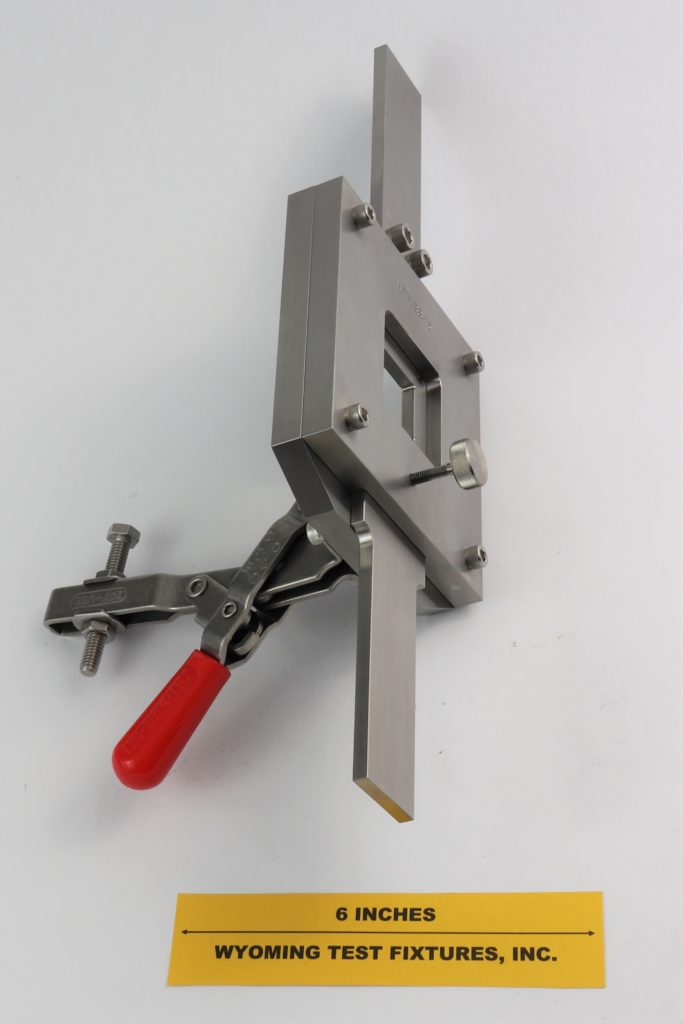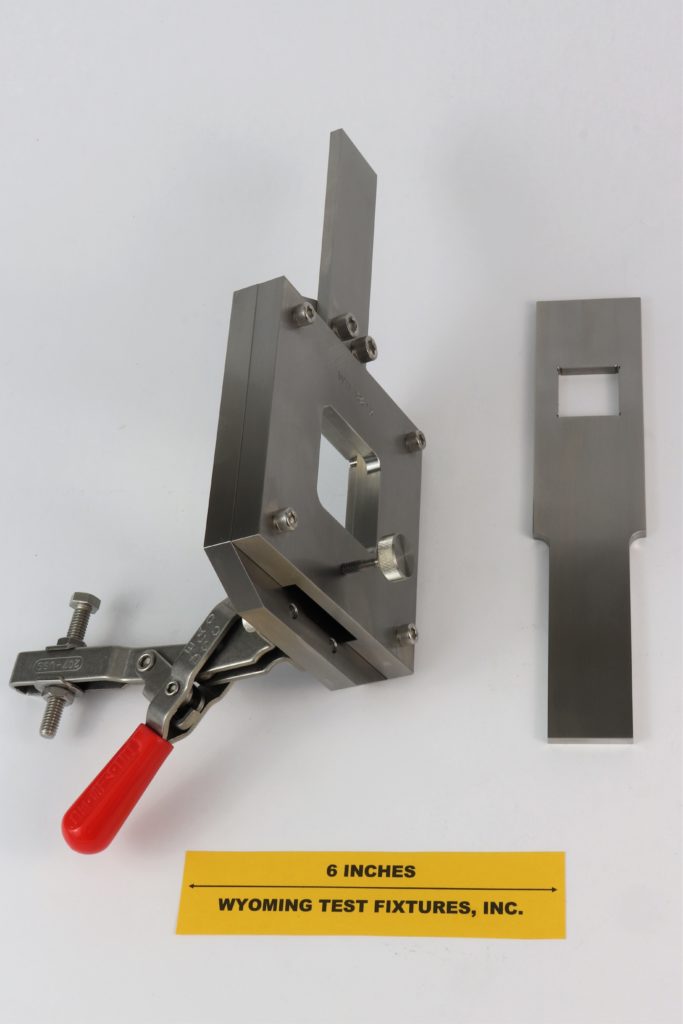Block-Shear Strength of Adhesive Bonds (ASTM D4501)
Model No. WTF-BS (Stainless Steel)


Fig. 1: Block-Shear Fixture Assembled without Specimen (left) and with Guillotine Bar Removed (right)
The ASTM D4501 Block-Shear Test Method (Reference 1) describes a procedure and test fixture used to determine the shear strength of an adhesive used to bond materials with moduli higher than the modulus of the adhesive. This is not very restrictive since most practical adherends are stiffer than most adhesives.
Two blocks of specific sizes are bonded together and the force required to shear them apart is measured using the fixture shown above. A typical test specimen consists of a 1 in. x 1 in. block, typically up to ½ in. thick, bonded in the center of a 3 in. x 3 in. block, also typically up to ½ in. thick. The block thicknesses are not critical.
The toggle clamp is used to hold the larger block in place in the main body of the fixture, against the front plate. The smaller block is positioned in the opening in the guillotine bar, which is temporarly held in the proper position for specimen insertion by the thumb screw shown in the front face plate. This thumb screw is loosened before the test is started. The fixture is gripped at top and bottom in standard tensile grips in the testing machine.
The guillotine bar is shown removed from the fixture in the photograph below, so that its configuration can be more readily seen.
Source of Additional Information:
1) ASTM Standard D4501-01 (2001), “Standard Test Method for Shear Strength of Adhesive Bonds Between Rigid Substrates by the Block-Shear Method, American Society for Testing and Materials, West Conshohocken, Pennsylvania (first published in 1985).

